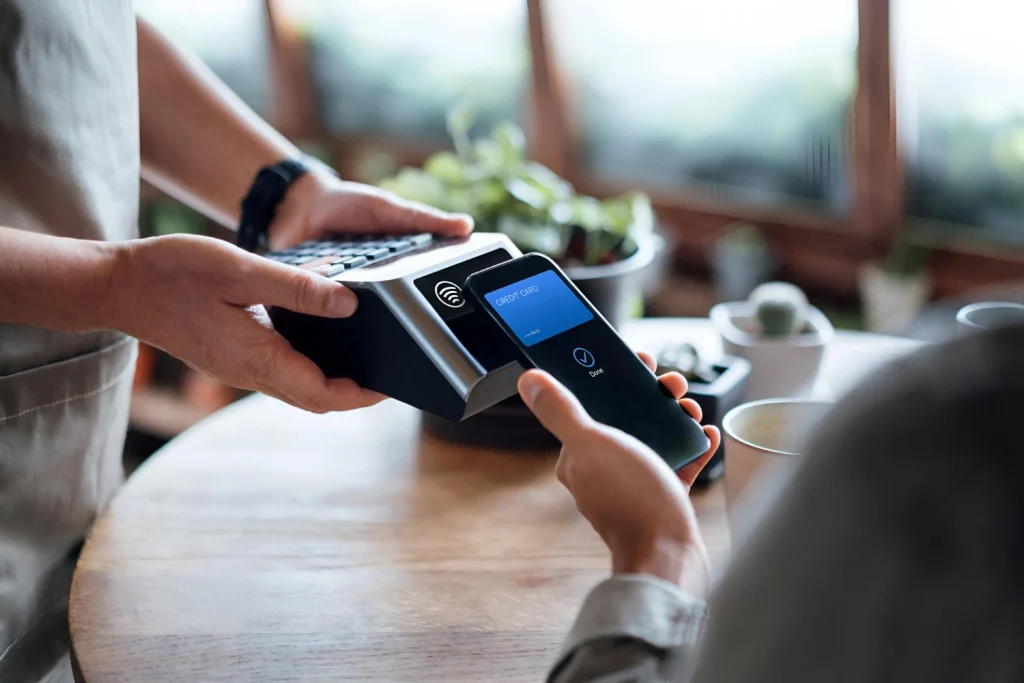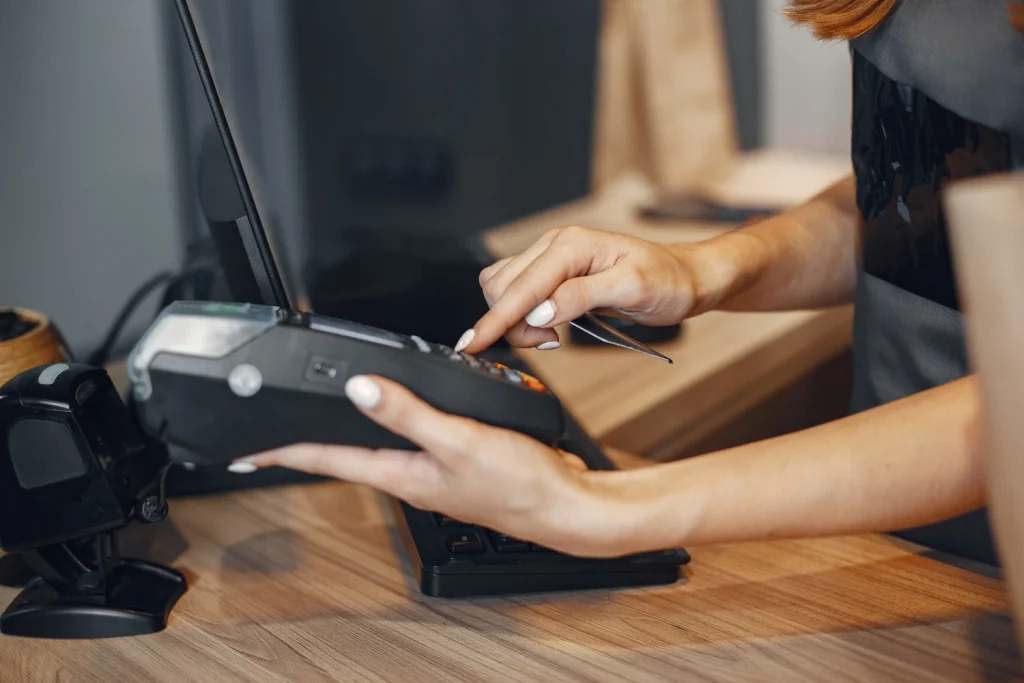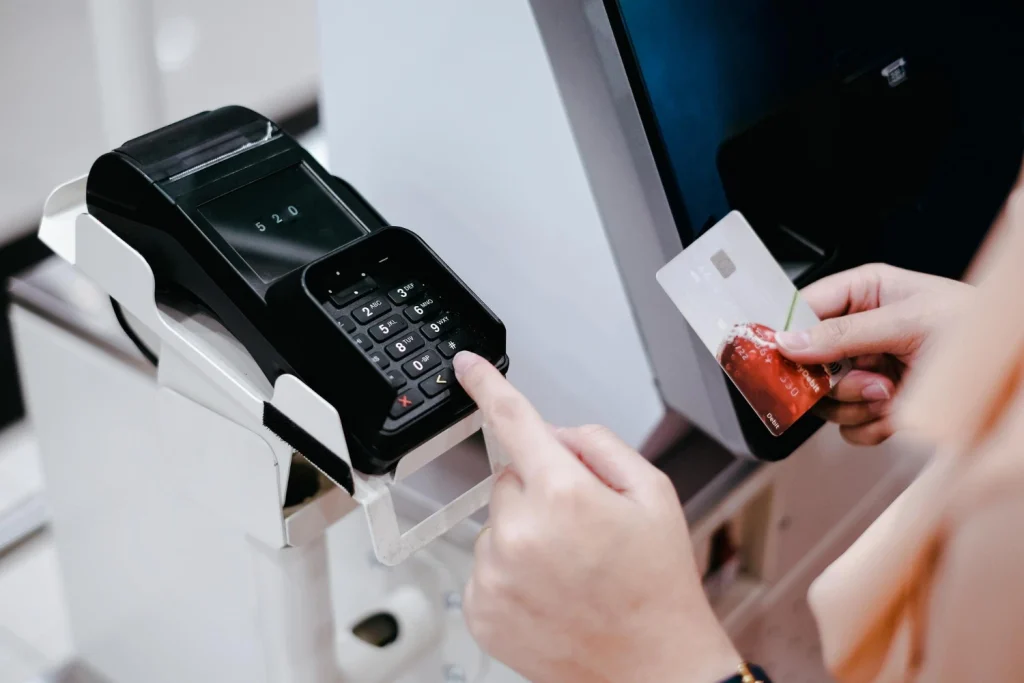Speed and convenience now define customer experience across every industry. With devices getting smarter, a wireless POS system has become essential for fast, seamless payments anywhere, no cables needed. Unlike old terminals, the best POS system for mobile business works with WiFi, Bluetooth, or mobile data, so customers never wait. Many even process sales offline when the Internet drops.
In this blog, we share 10 top wireless POS options for quick, secure, and efficient transactions..
1. Square Handheld
The Square Handheld is the first and top-of-the-chart device when it comes to wireless POS devices. It has portability with power and a sleek, compact design that makes it easy to take anywhere. Its bright touchscreen and integrated payment reader support tap, chip, and swipe, which makes transactions smooth. It has been designed to last all day with a long battery life. Consider it perfect for mobile vendors, pop-up shops, and events, as it is quite functional and needs no effort.
Advantages
- All-in-one design with no extra accessories required
- Long battery life for extended use
- Easy to set up and operate
- Supports multiple payment types
- Compact and lightweight
Disadvantages
- Limited customization compared to tablet-based systems
- May not handle complex inventory management needs
Pro Tip
Keep a portable battery pack handy during high-volume events so you can recharge on the go without leaving your sales spot.
2. Square POS with Mobile Reader
The next one in our list is the Square POS with a mobile reader. It transforms any smartphone or tablet into a payment terminal. Connected via Bluetooth, Square POS with a reader works effortlessly, and this makes it a perfect solution for small retailers, food trucks, and temporary stalls. Plus, it also supports offline payments that ensure your sales keep going even if the network is down.

Advantages
- Affordable entry cost
- Portable and easy to carry
- Works with free POS software
- Transparent flat-rate pricing
- Offline mode available
Disadvantages
- Dependent on a paired device
- Basic hardware design compared to standalone POS units
Pro Tip
Always keep your paired phone/tablet fully charged—if it dies, your POS goes offline too.
3. Shopify POS Tap to Pay
Shopify POS Tap to Pay helps businesses accept contactless payments with just a compatible smartphone. It can integrate directly with Shopify’s eCommerce platform. Also, it provides an easy system for both online and in-person sales. This POS system matches best with retailers who manage both online stores and physical locations.

Advantages
- No additional hardware required for Tap to Pay
- Full integration with Shopify’s online store
- Real-time sales and inventory sync
- Multiple staff accounts supported
- Built-in analytics tools
Disadvantages
- Only available on certain devices
- Works best for businesses already using Shopify
Pro Tip
Set up automated inventory alerts so online and in-store stock stays in sync without manual checks.
4. Clover Go
Next up, we have Clover Go, which is a portable card reader. You can pair it with a smartphone or tablet, and in return, it allows for easy transactions and payment processes. It’s perfect for small retail shops, service providers, and mobile businesses. The device accepts chip, swipe, and contactless payments. It even integrates with Clover’s full POS system.
Advantages
- Compact size for easy portability
- Strong security with encryption
- Compatible with Clover’s full POS features
- Affordable hardware cost
- Supports all major payment types
Disadvantages
- Limited functionality without a Clover subscription
- Dependent on paired devices for use
Pro Tip
If you use Clover Go at outdoor markets, invest in a rugged phone/tablet case to protect your paired device from drops or weather.
5. Clover Mobile
Clover Mobile is a standalone wireless POS device that offers enhanced features compared to Clover Go. It comes with a built-in barcode scanner and printer, making it perfect for mobile retail operations that need more than just payment processing.
Advantages
- Standalone device with integrated tools
- Long battery life for full-day use
- Supports loyalty programs and apps
- Fast transaction processing.
- Durable build for frequent handling.
Disadvantages
- Higher upfront cost than entry-level models.
- Can be overpowered for very small operations.
Pro Tip
Take advantage of the built-in printer for on-the-spot receipts. It can boost customer trust and reduce disputes.
6. Toast Go
Toast Go is another excellent wireless POS system, designed for restaurants, cafes, and hospitality businesses. It allows staff to take orders and process payments, that too, directly at the table. Thus, this helps to reduce wait times and improve service efficiency.
Advantages
- Integrates with kitchen display systems
- Supports multiple payment types
- Quick navigation for menu items
- Rugged design for heavy use
Disadvantages
- Requires Toast software subscription
- Less suited for retail businesses
Pro Tip
Train staff to split checks right at the table. Doing this speeds up turnover and improves customer satisfaction.
7. PayPal Zettle
PayPal Zettle offers an easy setup with a compact card reader that connects via Bluetooth. It’s ideal for market vendors, freelancers, and mobile sellers. The system is simple to use and perfect for on-the-go transactions.

Advantages
- Low-cost hardware
- Accepts cards, contactless, and PayPal payments
- Flat transaction rates
- Easy sales reporting
- Portable and light
Disadvantages
- Limited advanced features
- Less suitable for large retail environments
Pro Tip
Link your Zettle account to your PayPal account for instant access to funds instead of waiting for bank transfers.
8. Lightspeed POS Mobile
Lightspeed POS Mobile serves retailers with extensive product ranges. You can operate it on tablets and provide a larger screen for easier inventory management and better customer interaction. This system enhances efficiency and improves the in-store experience.
Advantages
- Cloud-based for real-time updates
- Offline mode available
- Barcode scanning for fast checkout
- Customizable interface
Disadvantages
- Higher monthly cost
- More complex setup than simpler POS systems
Pro Tip
Use Lightspeed’s analytics dashboard to identify your best-selling products and optimize inventory before busy seasons.
9. Move 5000 by Swyft POS
If you run a busy shop, café, or you’re often on the move, the Move 5000 from Swyft POS is the kind of payment terminal you don’t have to think twice about. It takes tap, chip, and swipe payments in seconds. If the Wi-Fi drops, no problem — it still takes the payment and syncs it once you’re back online. The battery lasts the whole day, so you’re not scrambling for a charger mid-shift. It’s light enough to carry around, but solid enough to handle being used all day.
Advantages
- Works online or offline without a hitch
- Handles all major payment methods
- Battery easily lasts a full shift
- Comfortable, handheld design
- Live sales and stock updates through Swyft POS
Disadvantages
- More expensive than basic card readers
- Extra features need a Swyft POS plan
Pro Tip
Don’t wait for the customer to come to the counter — bring the Move 5000 to them. Take payment right from Swyft POS. It saves time, feels more personal, and customers appreciate not having to queue.
10. eHopper POS
eHopper POS, the most affordable solution for small businesses, comes with a free basic plan. It works amazingly on smartphones, tablets, and desktop devices. This flexible system helps businesses manage sales without compromising the budget.
Advantages
- Free entry-level plan
- Supports multiple payment methods
- Offline capability
- Easy setup and quick launch
- Runs on various devices
Disadvantages
- Limited advanced features in free plan
- Hardware not included by default
Pro Tip
Use the offline mode strategically in areas with spotty WiFi so transactions are never interrupted.
Final Thoughts
The best pos system for mobile business has now gained immense popularity among retailers. It helps businesses improve service speed. Once you have integrated wireless POS in your system and payment process, you can surefire your operations and enhance customer experience as well. But remember, the best choice of wireless POS system depends highly on the size of your business, industry, and specific features that you need.
Are you searching to upgrade your POS system? Get in touch with our experts at Swyft POS today. Send us your business query at [email protected] and we’ll ensure you find the perfect payment solution!
Frequently Asked Questions
1. What is a wireless POS system?
A wireless POS system processes transactions using WiFi, Bluetooth, or mobile data, allowing businesses to accept payments anywhere without a fixed checkout counter.
2. Can a wireless POS work without Internet?
Yes. Many wireless POS systems offer offline mode, storing transactions securely and syncing them once an Internet connection is restored, ensuring uninterrupted sales during outages.
3. Are wireless POS systems secure?
Yes. Most wireless POS systems use encryption, tokenization, and PCI compliance standards to protect sensitive customer data and maintain transaction security across different payment methods.
4. Which businesses benefit most from wireless POS?
Wireless POS systems suit restaurants, retail stores, market vendors, and service providers that require mobility, faster transactions, and the flexibility to accept payments anywhere.
5. How much does a wireless POS cost?
Costs vary by brand and features. Expect to pay $0–$400 for hardware plus monthly software fees or transaction rates, depending on your business needs.





